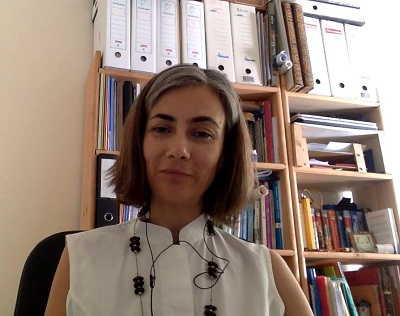There’s really no rational reason to cut Medicare. But what does this have to do with urine testing? Bear with us, we’re getting there.
America’s limited single-payer healthcare option, available to older and disabled Americans, Medicare provides some form of healthcare to 55 million people. That’s nice, surely—but more to the point, it generates serious profits for the country’s healthcare-industrial complex.
Medicare accounts for about 30 percent[1] of the country’s colossal prescription drug spending, a habit projected to exceed $610 billion a year[2] by 2021. One need not be so ambitious or sophisticated to find a rich vein to tap.
As Kaiser Health News[3] recently reported, one Tennessee-based pain clinic billed more than $1.8 billion a year in charges to Medicare. This fortune was mined by testing Americans’ pee[4].
The urine-testing factory at Comprehensive Pain Specialists, a drug-screening lab near Nashville, is possibly America’s busiest, but it’s merely one cog in a massive effluvia-examining machine. Between 2011 and 2014, according to researchers with KHN and the Mayo Clinic, Americans spent $8.5 billion a year on urine analysis[5]—an increase of 400 percent during that time period. Medicaid paid for fewer than two million urine tests in 2009, according to data. By 2014, that number had ballooned to nearly 20 million.
(Remember what else has quadrupled in recent history? Opiate painkiller prescriptions.[6] And the two are connected: One way CPS justifies its pee business is the high prescription rates of opiates in the states it services.)
Put into perspective, America spends more on testing pee than it does on the entire Environmental Protection Agency. As KHN reported: “The federal government paid providers more to conduct urine drug tests in 2014 than it spent on the four most recommended cancer screenings combined.”
So what do we get for all this time and effort?
Forgive us, but piddly-squat.
There are no accepted national standards for urine analysis—meaning who gets tested and for what varies wildly. Doctors say that urine testing is necessary to safely prescribe drugs, but “tens of millions of dollars” are spent on screening for drugs that pose a “minimal abuse danger.” More is spent on screening for rare street drugs like PCP. Even more common recreational drugs like cocaine and ecstasy are found “just one percent of the time,” yet they’re included in the urine analysis tests run.
So—why?
Because it’s lucrative. If you run a pain clinic, you can make your monthly nut by testing for urine—and then some.
“Thirty-one pain practitioners received 80 percent or more of their Medicare income just from urine testing,” KHN reported.
Those are only the most egregious examples of a system where gangs of doctors make more money testing their patients than they do treating them.
It’s also an obvious hustle.
More than 700 urine samples from all over the southeast are received every day at CPS in Tennessee, which may store the urine for as long as a month before it can be run through sophisticated machinery. All this infrastructure is costly—and probably not necessary. Most drug test screening[7] can be done with a $10 kit that includes the following equipment: A cup to pee in and a testing strip that shows what drugs are present within minutes.
But as KHN discovered, once doctors and clinics found it difficult to justify huge bills for these simple screenings, they switched to the machines—and started charging more, and more often. One pain clinic argued in 2008 that patients should be screened for drug use as often as once a week. Why not, when each machine test, KHN noted, can be billed individual to Medicaid.
Charles Root, a lab industry consultant, called it “almost a license to steal.”
The obvious takeaway is that an incredible amount of money is being literally pissed away on screenings that accomplish nothing aside from fulfilling a profit motive. The other point to remember is that this is all legal.
There aren’t federal standards on what to test, how often or through which method. In 2016, Medicaid did begin a “crackdown on urine billing” as part of a review that reset lab fees for the first time in years—but pee tests are still a large part of the business plans of CPS and other clinics. Until the feds step in, the profits will keep flowing.
References
- ^ about 30 percent (www.kff.org)
- ^ projected to exceed $610 billion a year (www.bloomberg.com)
- ^ Kaiser Health News (khn.org)
- ^ testing Americans’ pee (hightimes.com)
- ^ urine analysis (hightimes.com)
- ^ Opiate painkiller prescriptions. (www.cdc.gov)
- ^ drug test screening (hightimes.com)
Read more https://hightimes.com/health/huge-profits-questionable-benefits-urine-testing/
Latest
Coronavirus Strikes Massachusetts Cannabis Company Employees
Reassessing the Essential: Cannabis in the Time of a Pandemic
5 Reasons To Try Aspen Valley CBG Flower (30% Off)
High Times Cannabis Cups Go Virtual In Wake Of Coronavirus Pandemic
Drug Enforcement Administration Proposes Plan To Expand Cannabis Research
Ghana Legalizes Cannabis For Medicinal And Industrial Uses
The cheapest legal weed in Canada: Discover these cannabis ‘value brands’
Cannabis and coronavirus: Here’s what you need to know
cannabis designs
The Best Of
WHO Rules CBD Should Not Be a Scheduled Drug

Dr Cristina Sanchez PhD video interview on medical marijuana and cancer

Biochemist Dennis Hill interview; Cannabis oil as a cure for cancer.

The unofficial World Record holder for cannabis smoking part 1





